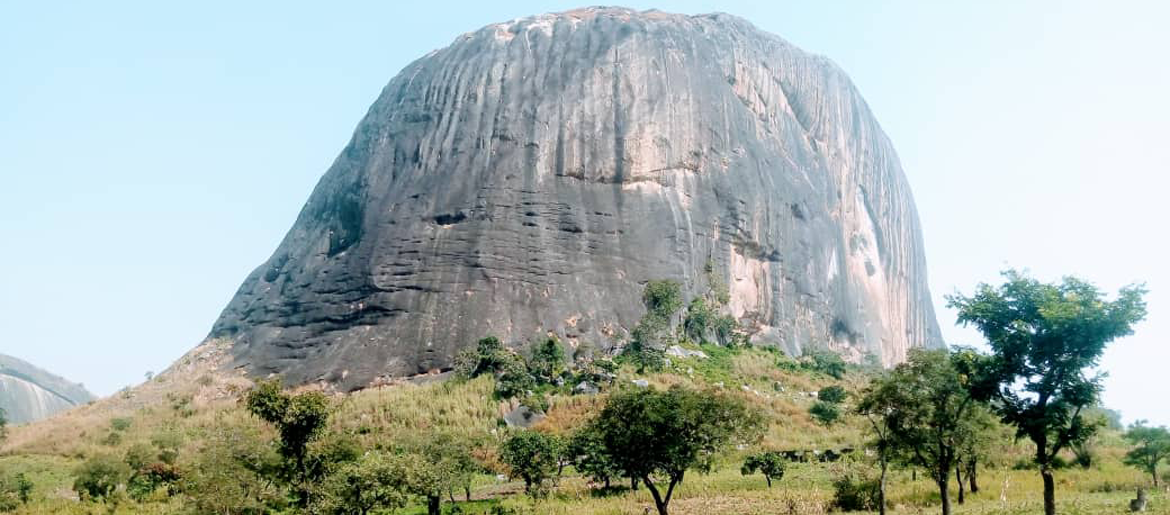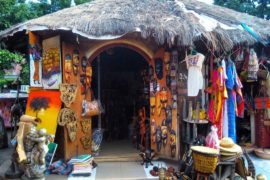The first time I saw the Zuma Rock as a national monument of Nigeria was when it was depicted on the N100 note as a symbol of our national treasure. I have heard myths and mysterious stories about the rock. I remember so well that in the past when we used to farm behind the rock, I would never go to the farm alone without the company of my siblings because of many of these fearful stories.
Amidst these mysterious stories about the rock, I have never encountered any incident of rituals nor heard an eye-witness’ report about Zuma Rock, except for the ones aired on “Lean On Me Program” on Capital FM every Thursday by Tony Amole. Many dread going to this rock for fear of being a victim of its mysteries. We have listened to people give account of people and victims who are said to have escaped from the hands of ritualists from the rock and others testify to seeing.
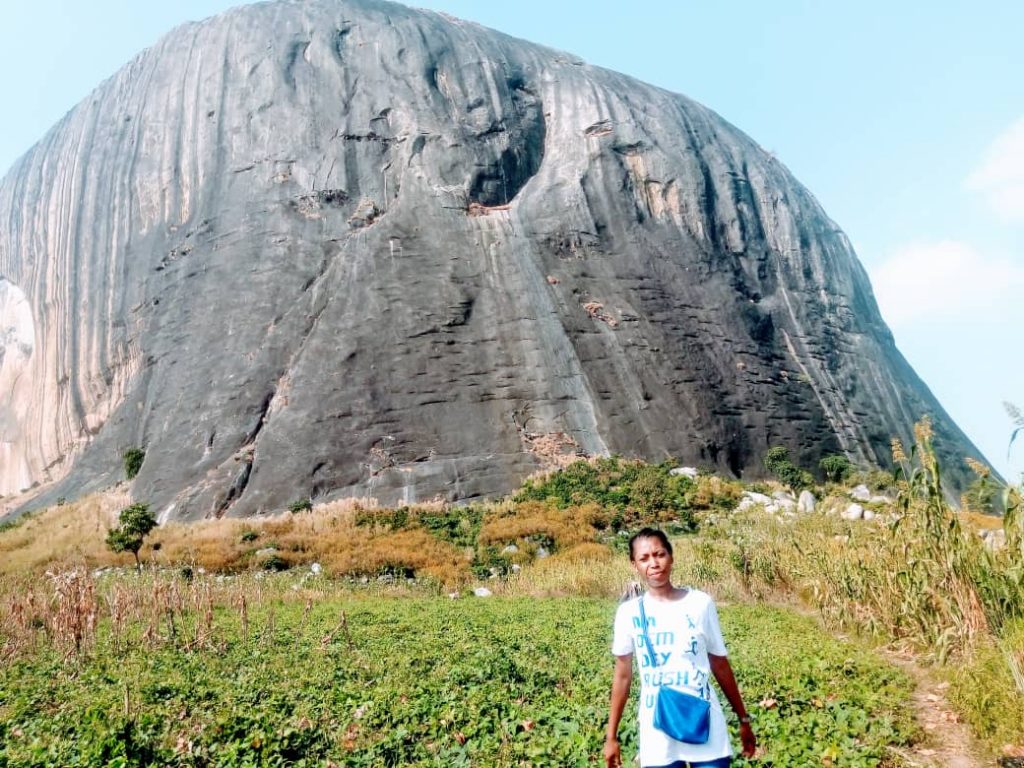
For five years, we have farmed around the rock and I have never seen any of such things happen. My only thought about this rock has always been its majestic magnificence, beauty and the wonder of the creation of God. How can such an endowment be here and is not fully harnessed by the government?

Zuma Rock is a large natural monolith, an igneous intrusion composed of gabbro and granodiorite, that border between Niger and Abuja, Nigeria. It is located immediately west of Nigeria’s capital, Abuja, along the main road from Abuja to Kaduna off Madala, and is sometimes referred to as the “Gateway to Abuja from neighboring state – Kaduna. Standing at 725 meters (2,379 feet), it majestically presides over the surrounding landscape. Travelers will often notice that there is an unusual silence when travelling the highway in the area.
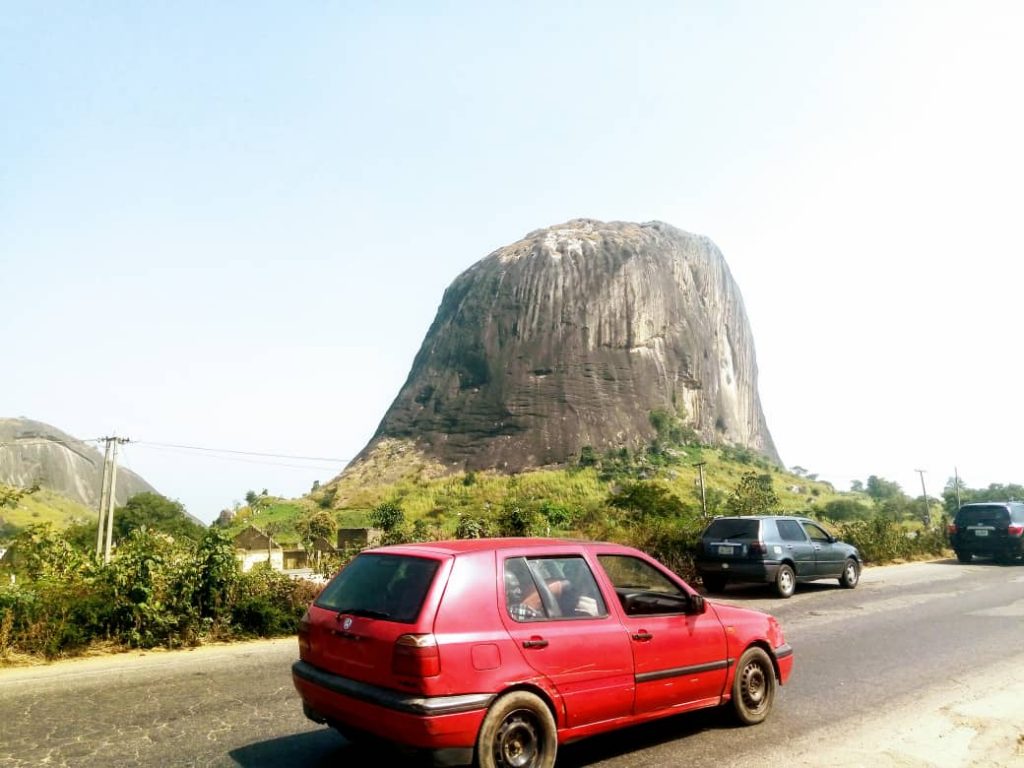
The mythical and legendary story that surrounds the rock is that locals have said the rock was used for a defensive retreat by the Gbagyi people against invading neighbouring tribes during inter-tribal wars. It is a rock that possesses facial features with natural contours on the surface which depict the image of a human face with a visible mouth, eyes, and nose.
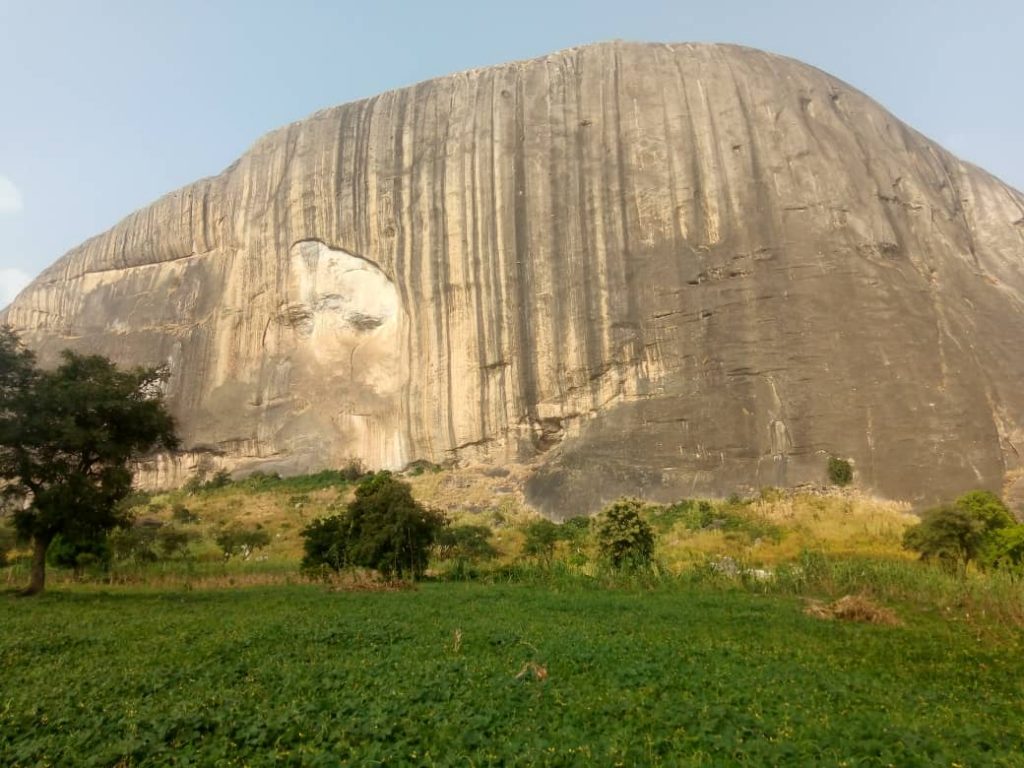
The natives of the community believe the face represents the deity and ancestral powers protecting and governing the affairs of the community. The Gbagyi people also acknowledge the rock as a gateway for the afterlife. It is believed that when people die, their spirits go to the rock. Mysteriously, the rock catches fire during the rainy season. The apex of the rock often catches fire and the Natives attest the happenings to the wonders of the deities and voodoo spells.
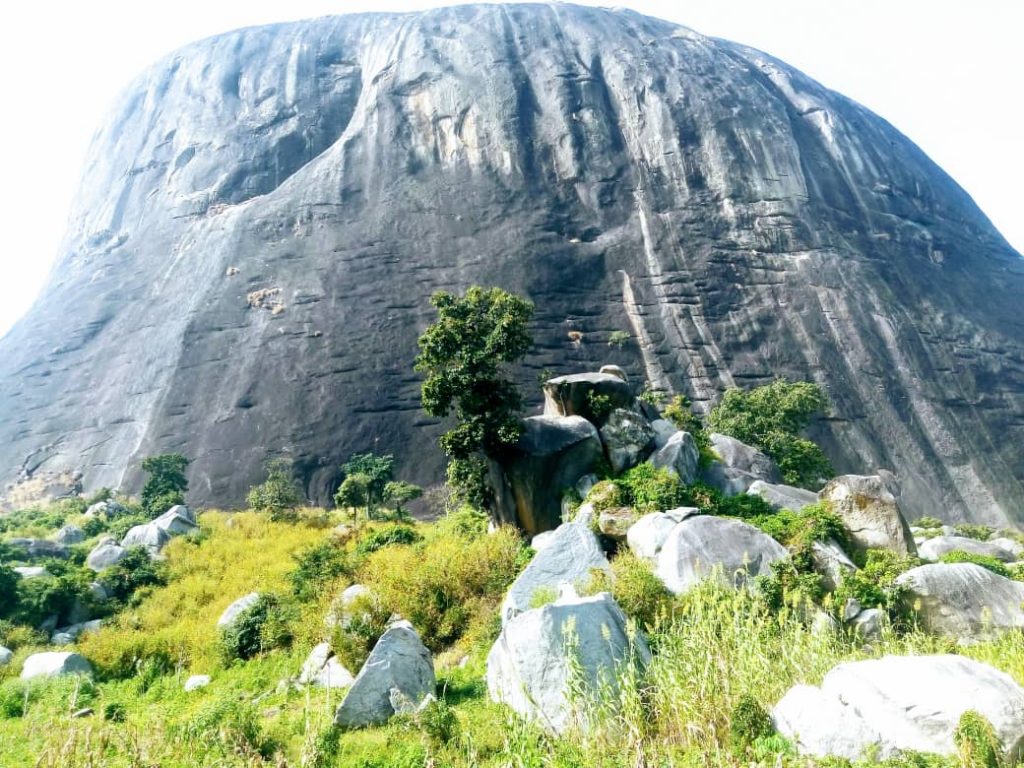
However, a scientist, who spoke to Culture Trip some years back, object to this belief. Dr. Kistso Ngargbu, a geologist and lecturer at Nasarawa State University, Keffi, said that “If it is after rainfall and a particular boulder or broken pieces of the rock got saturated with water, that’s the contact between heat and the main rock body. In the event that it had to slide because water now serves as a lubricating surface, friction is created. We should remember that our forefathers used to make fire from rocks glided against each other. That is what could have happened. Rainwater got to the surface, lubricated the boulder and then generated a sliding probably based on a sloppy surface, and in the event of sliding down, the fire came up.”
Zuma Rock served as a hideout against external forces. Although, there is no precise historical account pertaining to the origin of the rock, however, Zuma Rock is said to have been first located in a thick forest by the people of Zuba in the 15th century upon the instruction of their soothsayer. The Zuba people named the rock, “Zumwa”, which means “the place of catching guinea fowls” upon finding out that there were many within the forest.
Upon their arrival in the forest, they settled around it and constructed settlements, and later discovered the spiritual representation of the rock as a powerful deity. They turned to worshipping and offering sacrifices to the rock to protect them and keep them safe from evil. Over time, the people of Gwari or Gbagyi used the rock as a defense and hideout against invading neighbouring tribes and external forces.
It was also gathered that it protects against a disastrous outburst and another yet interesting myth suggests that the Zuma Rock sits on a very large expanse of underground water. it is believed that if the rock is pulled down, there will be an outburst of water which will submerge an unimaginable land area.
According to Culturetrip, it is twice as high as the Uluru Rock in Australia. It is also higher than the height of Nigeria’s popular Aso Rock and Olumo Rock put together, and more than four times as high as Nigeria’s tallest building, NECOM House.
In an attempt to corroborate some of these mysterious stories with facts, I took an adventurous visit to Zuma rock. The same rock I have passed many times many years ago on the foot path to our farm remained the same. The excitement that trailed my journey to search for the unusual in Zuma rock was doubled by the hiking and climbing of the foot hills of the rock. My experience is not different from the experiences of other travellers and tourists that have visited and passed through Zuma Rock to the neighbouring states.
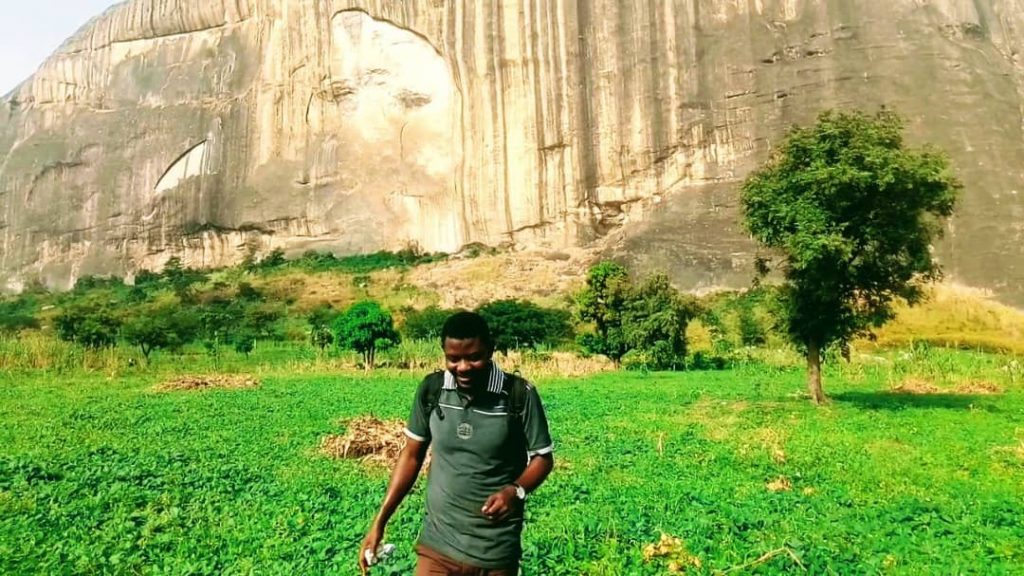
Reviews from Trip Advisor have shown that a lot of tourists and travellers have shared their experience about the rock. Marshal shared his experience on Trip Advisor on September 2020 saying “What a wowing experience!”
Zuma Rock is an attraction that one can never get tired of visiting. For every time you visit the attraction, there is always a refreshing excitement that makes you appreciate the good work of nature.
Another traveller, Assurance Life, who shared his review on Trip Advisor said “Awesome natural monument.”
I always feel the awesomeness of this natural monument of Zuma Rock having human-like face whenever I travel the Abuja – Kaduna road. Sometimes I’ve had to stop by to take some pictures for a keepsake.
Iguda wrote: “Zuma Rock Need to be developed as a Recreational and Tourist Center. This attraction is located close to Abuja while travelling from Kaduna and coming from the North. I have passed this rock twenty times when travelling to and from Abuja over the last twelve years. It is a massive igneous intrusion that besides serving as an attraction can be visited for excursion by students of Geography, which is my area of specialization as an Academic staff.”
The rock is similar to the Kwatarkwashi Rock located along Gusau Road in Zamfara State. There are no facilities provided for recreational/tourist activities around the rock except for an uncompleted hotel building that could not be completed due to threats by spirits or jinx, according to popular sayings. These issues notwithstanding, the rock area should be developed as a recreational, tourist center to serve particularly the people of Abuja and foreign visitors to the federal capital.
When you visit or take a tour to Abuja next time, you should come and see the majestic Zuma Rock for yourself.


